NCERT Exemplar Solutions for Class 11 Biology Chapter 1 The Living World are one of the best study resources to prepare for the CBSE Class 11 and entrance examinations. NCERT Exemplars for Class 11 Biology Chapter 1 deals with diversity in the living world. This is very important from the exam point of view, which introduces you to the basic knowledge of the living world.
The NCERT Class 11 Biology Chapter 1 Exemplar is provided below to help students understand the concepts more effectively. These solutions comprise answers to questions in the NCERT exemplar book along with important questions from previous years’ question papers. Exercises and worksheets provided in this exemplar will assist you in gaining knowledge of the advanced concepts involved in Class 11 Biology Chapter 1.
The Living World talks about the different living organisms living together in an ecosystem. Some of the different types of spaces where life exists are the sea, deserts, freshwater, and warm water springs. In order to categorise anything as living, they need to have certain qualities, which are as follows:
- Response to Stimuli
- Growth
- Reproduction
- Metabolism
Download NCERT Exemplar for Class 11 Biology Chapter 1 The Living World PDF
Access NCERT Exemplar Solutions for Class 11 Biology Chapter 1
MULTIPLE CHOICE QUESTIONS
1. As we go from species to kingdom in a taxonomic hierarchy, the number
of common characteristics
a. Will decrease
b. Will increase
c. Remain the same
d. May increase or decrease
Solution:
Option (a) is the answer.
2. Which of the following ‘suffixes’ used for units of classification in plants indicates a taxonomic category of ‘family’?
a. – Ales
b. – Onae
c. – Aceae
d. – Ae
Solution:
Option (c) is the answer.
3. The term ‘systematics’ refers to:
a. Identification and study of organ systems of plants and animals
b. Identification and preservation of plants and animals
c. Diversity of kinds of organisms and their relationship
d. Study of habitats of organisms and their classification
Solution:
Option (c) is the answer.
4. Genus represents
a. An individual plant or animal
b. A collection of plants or animals
c. A group of closely related species of plants or animals
d. None of these
Solution:
Option (c) is the answer.
5. The taxonomic unit ‘Phylum’ in the classification of animals is equivalent
to which hierarchical level in the classification of plants
a. Class
b. Orderc. Division
d. Family
Solution:
Option (c) is the answer.
6. Botanical gardens and zoological parks have
a. Collection of endemic living species only
b. Collection of exotic living species only
c. Collection of endemic and exotic living species
d. Collection of only local plants and animals
Solution:
Option (c) is the answer.
7. A taxonomic key is one of the taxonomic tools in the identification and
classification of plants and animals. It is used in the preparation of
a. Monographs
b. Flora
c. Both a & b
d. None of these
Solution:
Option (c) is the answer.
8. All living organisms are linked to one another because of
a. They have the common genetic material of the same type
b. They share common genetic material but to varying degrees
c. All have common cellular organization
d. All of the above
Solution:
Option (b) is the answer
9. Which of the following is a defining characteristic of living organisms?
a. Growth
b. Ability to make sound
c. Reproduction
d. Response to external stimuli
Solution:
Option (d) is the answer
10. Match the following and choose the correct option:
| Column I
A. Family B. Kingdom C. Order D. Species E. Genus |
Column II
i. tuberosum ii. Polymoniales iii. Solanum iv. Plantae v. Solanaceae |
Options
a. A-v, B-iv, C-ii, D-i, E-iii
b. A-iv, B-iii, C-v, D-ii, E-i
c. A-iv, B-iii, C-v, D-i, E-ii
d. A-iv, B-iii, C-ii, D-v, E-i
Solution:
Option (a) is the answer.
VERY SHORT ANSWER TYPE QUESTIONS
1. Linnaeus is considered as Father of Taxonomy. Name two other botanists known for their contribution to the field of plant taxonomy.
Solution:
George Bentham and Joseph Dalton Hooker are known botanists who gave the natural system of classification of flowering plants.
2. What does ICZN stand for?
Solution:
ICZN stands for International Code of Zoological Nomenclature. It regulates a uniform system of zoological nomenclature.
3. Couplet in taxonomic key means ________________ .
Solution:
The taxonomic key provides a certain structure on the basis of which the user can sort out the taxonomic position of the unknown species. Couplet means a pair which is of contrasting characters of an organism.
4. What is Monograph?
Solution:
A description of a single ting or a group of things is known as a monograph. It will have information regarding anyone taxon.
5. Amoeba multiplies by mitotic cell division. Is this phenomenon growth or reproduction? Explain.
Solution:
Amoeba is a single cell organism; its growth through mitosis is the same as reproduction since it divides to give rise to the new individual. Mitosis is responsible for growth.
6. Define metabolism.
Solution:
Metabolism is defined as the total of all biochemical reactions taking place within any living organism to sustain and maintain life.
7. Which is the largest botanical garden in the world? Name a few well-known botanical gardens in India.
Solution:
The world’s largest botanical garden is situated in London, which is known as Kew Royal Gardens.
Other known botanical gardens are:
1. Sanjay Gandhi Jaivik Udyan in Patna
2. Hyderabad Botanical Garden
3. NTR Garden, Hyderabad
4. Botanical Garden Sarangpur
5. Cubbon Park, Bangalore
SHORT ANSWER TYPE QUESTIONS
1. A ball of snow, when rolled over snow increases in mass, volume and size. Is this comparable to growth as seen in living organisms? Why?
Solution:
The growth in the case of ice ball is completely indifferent from growth. This happens due to the extrinsic growth by the deposition of the same material.
2. In a given habitat, we have 20 plant species and 20 animal species. Should we call this ‘diversity’ or ‘biodiversity’? Justify your answer.
Solution:
Biodiversity is nothing but the total of organism present in a particular area whereas diversity is termed for a large area which may be used for living or non-living things.
3. International Code of Botanical Nomenclature →ICBN) has provided a code for classification of plants. Give hierarchy of units of classification botanists follow while classifying plants and mention different ‘Suffixes’ used for the units.
Solution:
The hierarchy followed in plants:
Species → Genus → Family → Order → Class →Division → Kingdom
Suffixes used by botanists are as follows:
Taxon Suffix
a) Division -phyta
b) Class -ae
c) Order -ales
d) Family –aceae
4. A plant species shows several morphological variations in response to an altitudinal gradient. When grown under similar conditions of growth, the morphological variations disappear and all the variants have common morphology. What are these variants called?
Solution:
These variants are called the ‘ecotypes’. Plants show changes in morphological features in response to the altitudinal gradient.
5. How do you prepare your herbarium sheets? What are the different tools you carry with you while collecting plants for the preparation of a herbarium? What information should a preserved plant material on the herbarium sheet provide for taxonomical studies?
Solution:
For preparing a herbarium sheet, the paper is cut in the desired length →say, 29 x 41 cm.)
The dried specimen is taken and mounted on the sheers with the help of glue. You may use sellotape if desired.
Labels are out underneath each specimen.
Collections tools will include:
1. Digger
2. Knife and Scissors
3. Newspaper
4. Blotting sheet
5. Plant press
6. Notebook
7. Magnifying glass
The information that will be provided:
1. The scientific name of the specimen
2. Taxonomical details
3. Common name
4. Collector’s name
5. Place of collection
6. Date and Time
6. What is the difference between flora, fauna and vegetation? Eichhornia crassipes is called as an exotic species, while Rauwolfia serpentina is an endemic species in India. What do these terms exotic and endemic refer to?
Solution:
Flora is a plant life that occurs in a particular region or time.
Fauna is the total number of animals found in a particular region or time
Vegetation is a term used for plant forms which do not include particular taxa or botanical characteristics
Exotic species is any species of a plant living in any other place except its native and endemic species which are restricted to a particular area.
7. A plant may have different names in different regions of the country or world. How do botanists solve this problem?
Solution:
They have given a scientific name for each plant and animal. It became the common name throughout the world. Example: Mango is scientifically termed as Mangifera indica. Mango is called as Aam in India. But the scientific term is common.
8. Brinjal and potato belong to the same genus Solanum, but two different species. What defines them as separate species?
Solution:
In terms of reproduction, these two species vary. They share the same genus, but they remain different species.
9. Properties of cell organelles are not always found in the molecular constituents of cell organelles. Justify.
Solution:
This phenomenon of all living organisms is due to underlying interactions. The properties of cellular organelles are not present in molecular constituents.
10. The number and kinds of the organism are not constant. How do you explain this statement?
Solution:
Some factors are there which play an important role in this.
Season, extinction and human activities. Many of the living organisms are present at a particular time, and some species are wiped out, mainly deforestation by the hands of human beings, causing depletion in population.
LONG ANSWER TYPE QUESTIONS
1. What is meant by living? Give any four defining features of life forms.
Solution:
The ability of an object which can self-replicate and self-regulate is known as Living.
The 4 defining characteristics are-
i) Growth
ii) Reproduction
iii) Metabolism
iv) Consciousness
Growth: There are two types. Extrinsic and intrinsic growth. Which is deposited on the outer surface and one is inside the cell
Reproduction: Biological process in which an organism gives rise to individuals similar to themselves.
The process is of two types. Asexual and sexual reproduction.
Metabolism: It is the total of all chemical & biological reactions occurring simultaneously inside the cells. It is two types catabolism and anabolism. One involves the breakdown of molecules, and one is building up of biomolecules
Consciousness: Ability of the body to sense & respond to the external stimuli.
2. A scientist has come across a plant which he feels is a new species. How will he go about its identification, classification and nomenclature?
Solution:
A newly identified species can be easily classified by taxonomic aids. The scientist has to do comparative studies of the morphological & anatomical features with the features of existing plants present in the taxonomical aids, and according to binomial nomenclature given by Carl Linnaeus, the species can be classified. Some of the taxonomical aids that can be used are flora, manuals, monographs, catalogues etc.
3. Brassica Campestris Linn
a. Give the common name of the plant.
b. What do the first two parts of the name denote?
c. Why are they written in italics?
d. What is the meaning of Linn written at the end of the name?Solution:
a. Mustard
b. The first name represents genus, and the second denotes specific epithet
c. To indicate their Latin origin
d. It refers to Linnaeus, Linnaeus was the first to discover this plant.
He identified & classified the plant hence to give him credit and honour, Linnaeus is added as the suffix.
4. What are taxonomical aids? Give the importance of herbaria and museums. How are Botanical gardens and Zoological parks useful in conserving biodiversity?
Solution:
The collection of information, techniques, and procedures which helps to identify & classify an individual is called taxonomic aids.
Importance of herbarium
a) Collection of dried, pressed & preserved plants in sheets is called herbarium.
b) These sheets are arranged systemically according to the accepted system of classification.
c) It is used to provide information about flora.
d) It is used to study the morphology of plants.
e) Hence its comparative studies are used in the identification of unknown plants.
Importance of museums
It consists of a collection of preserved plants & animal used for study & references.
Many museums publish journals, research papers to make available the results of research in their collection.
5. Define a taxon. What is meant by taxonomic hierarchy? Give a flow diagram from the lowest to the highest category for a plant and an animal. What happens to the number of individuals and number of shared characters as we go up the taxonomical hierarchy?
Solution:
The grouping of organisms at any level is known as Taxon. This can be ranked as
Species-genus-family-order-class-phylum/division-kingdom
As we go from species to kingdom, there is a decrease in the number of common characteristics, and the number of individuals goes on increasing. Higher the category, it will be very difficult to determine the relationship to other taxa at the same level.
6. A student of taxonomy was puzzled when told by his professor to look for a key to identify a plant. He went to his friend to clarify what ‘Key’ the professor was referring to. What would the friend explain to him?
Solution:
A key is used to identify plants and animals based on their similarities and dissimilarities. The keys made are based on the contrasting characters that are depicted by the organisms, these are known as couplets. Each statement in the key is called the lead.
7. Metabolism is a defining feature of all living organisms without exception. Isolated metabolic reactions in vitro are not living things but surely living reactions. Comment.
Solution:
Metabolism is defined as the total of all chemical reactions that take place inside the body. Metabolism is purely characteristic of living beings. No living organism can exhibit metabolism. In a cell-free system, these reactions can be replicated that is outside a living body.
These reactions never lead to a new life or maintenance of life. Therefore it can’t be called living.
8. Do you consider a person in coma-living or dead?
Solution:
A coma is defined as a prolonged state of unconsciousness. The person who is suffering coma will be unaware of the surroundings. A state of mind which keep the person sleepy even though the person is alive. The working of the brain will be at its lower stage of alertness. The person will live with the help of machines which is linked to the organs. However, a lot many metabolic activities still take place, and people often come out of their comatose state, so they are living.
9. What is the similarity and dissimilarity between “whole moong daal” and “broken moong daal” in terms of respiration and growth? Based on these parameters, classify them into living or nonliving.
Solution:
The whole moong daal has an intact embryo whose respiration rate is slow during the phase of dormancy. When these are provided with growth conditions, like providing it with water, growth is restored and the seed →moong daal) germinates and forms a new plant, and the broken moong daal’s embryo isn’t intact. As a result of this, it cannot respire and doesn’t grow or germinate.
10. Some of the properties of tissues are not the constituents of their cells. Give three examples to support the statement.
Solution:
Blood is a connective tissue that is made up of RBCs, WBCs and Platelets. It functions as a nutrient transporter inside the body, whereas the blood cells do not play this function.
Bone is a specialized connective tissue which functions as mechanical support that is made up of osteocytes. These osteocytes do not provide mechanical support.
Dry skin is made up of epithelial cells. Epithelial tissues will function as protection from chemical and mechanical stress, whereas epithelial cells do not play this role.
| Also Access |
| NCERT Solutions for Class 11 Biology Chapter 1 |
| CBSE Notes for Class 11 Biology Chapter 1 |
Important Topics of Chapter 1 The Living World
- What Is ‘Living’?
- Diversity in the Living World
- Taxonomic Categories
- Taxonomical Aids.
BYJU’S has made learning accessible to everyone, and the content provided is updated to meet the current trends and requirements to deliver effective quality education to the masses. You can study at your convenience, without any restrictions, such as time, place, and the number of available resources. Everything you need to do to secure good marks and build a career for the future is in the palm of your hands. Download and explore BYJU’S – The Learning App now. Also, subscribe to our YouTube channel to find a wide range of study resources that are explained in an easy and effective manner.
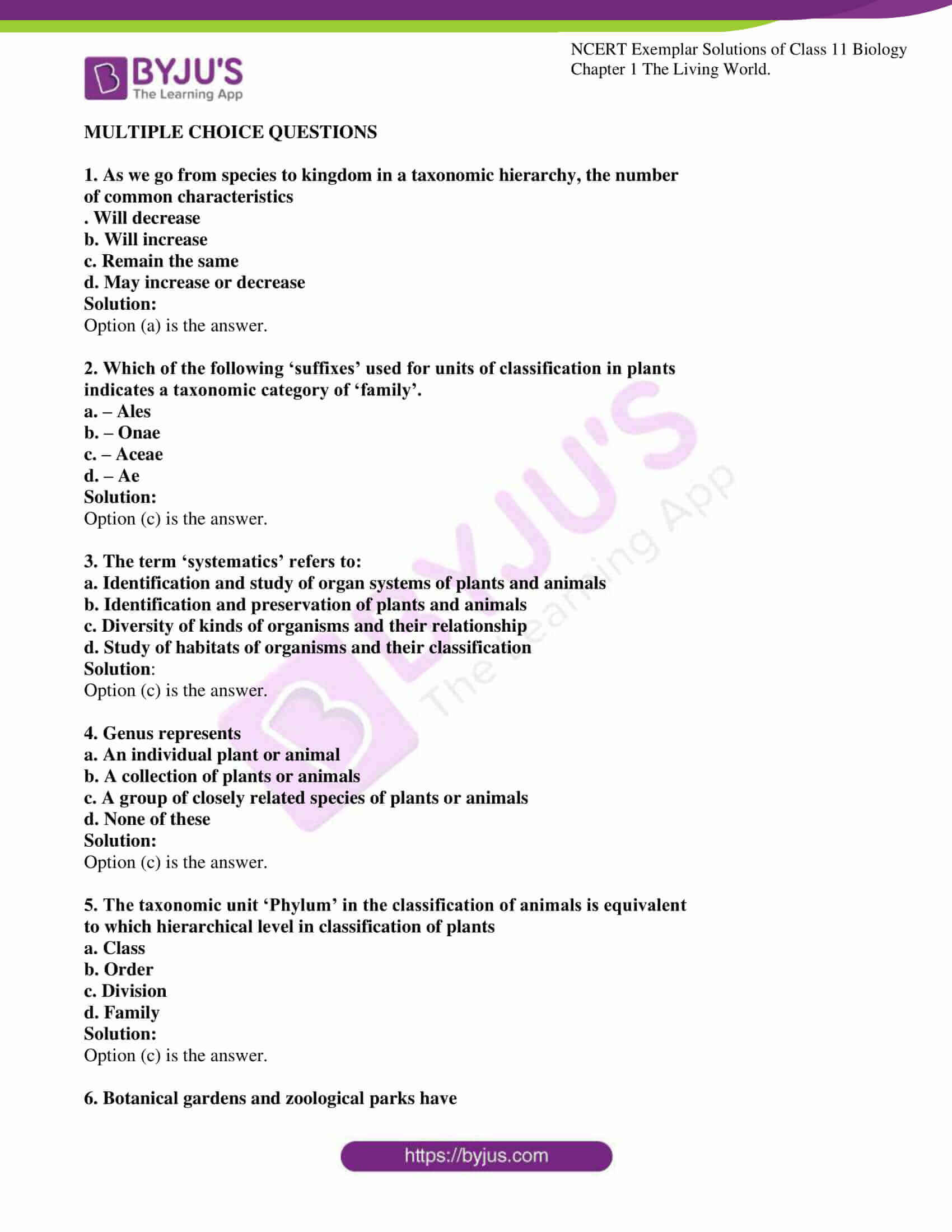

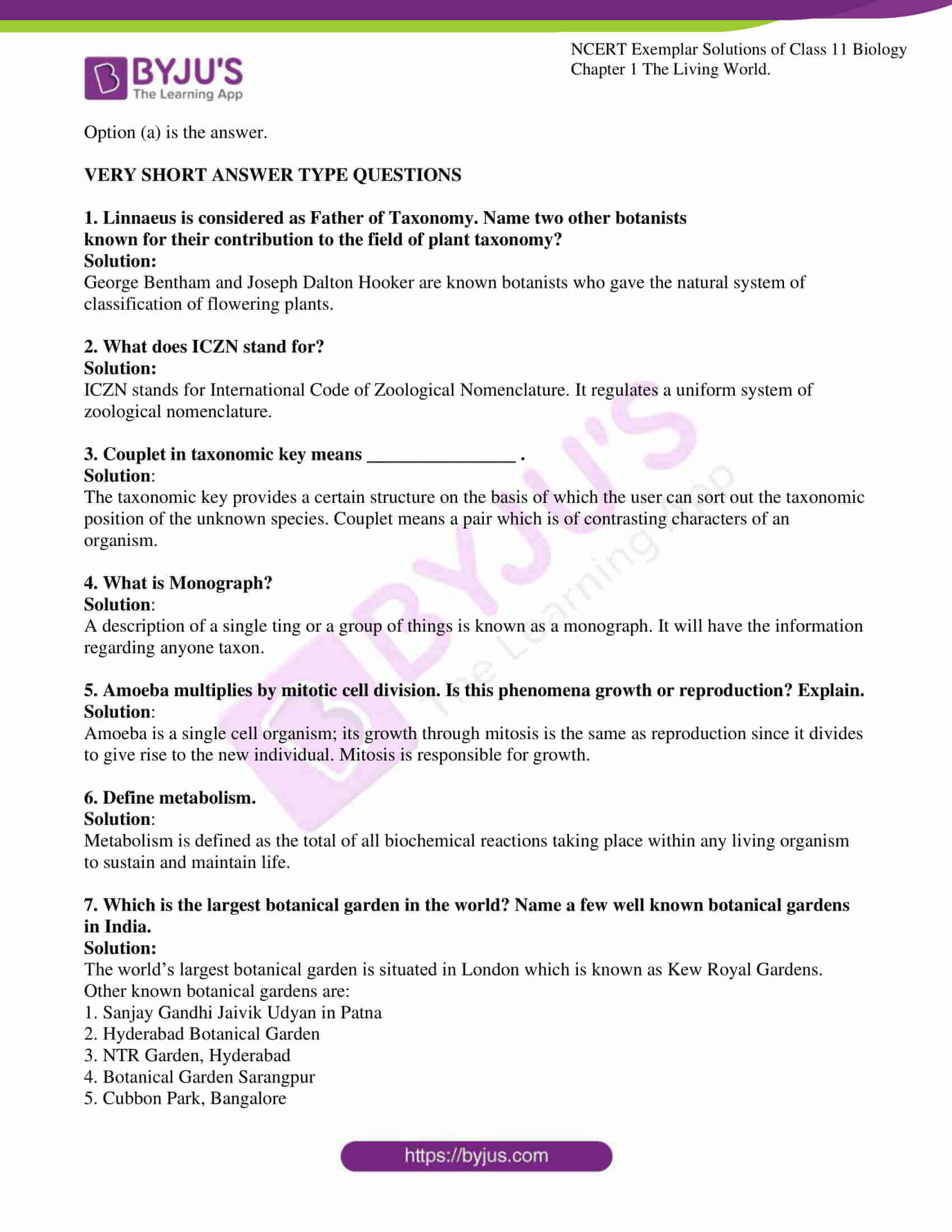
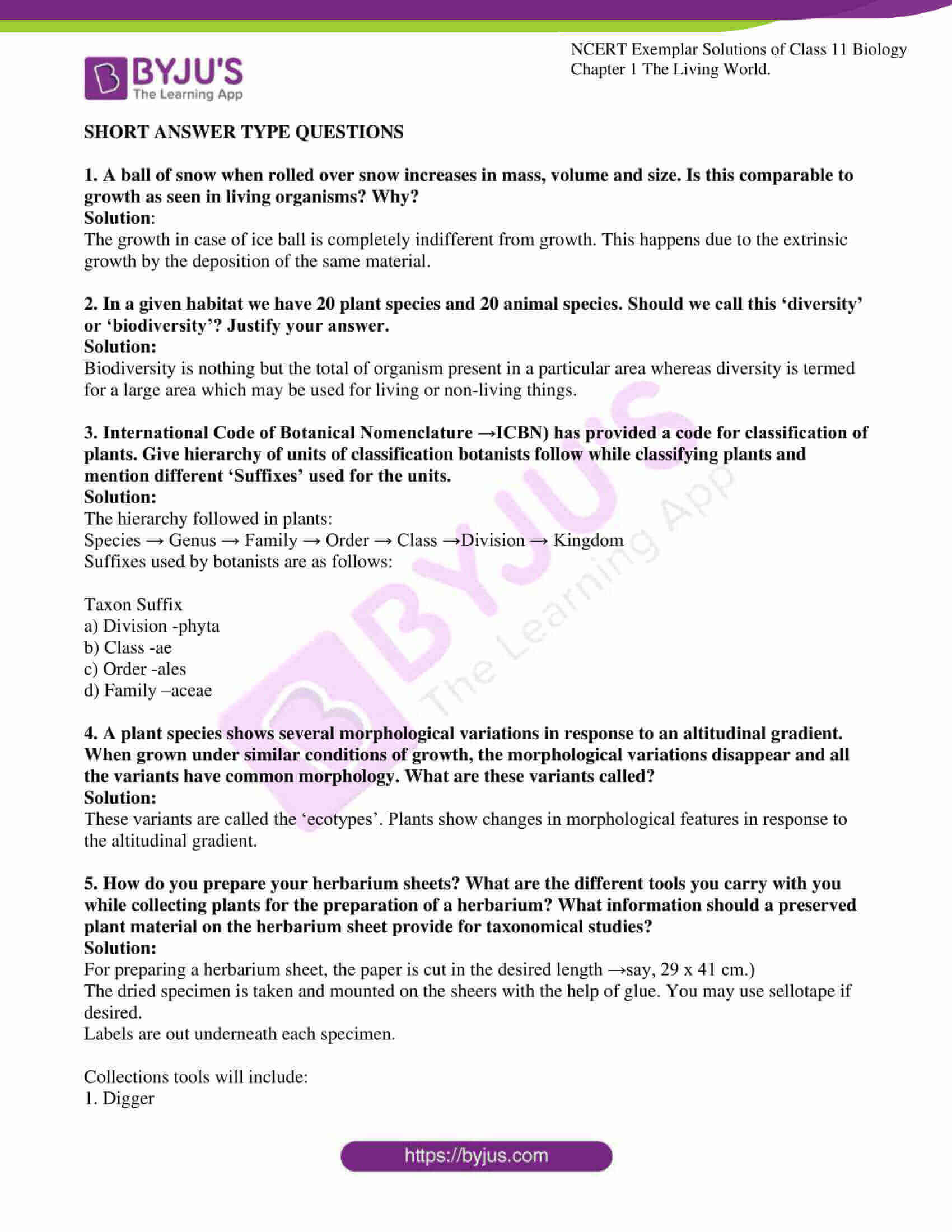
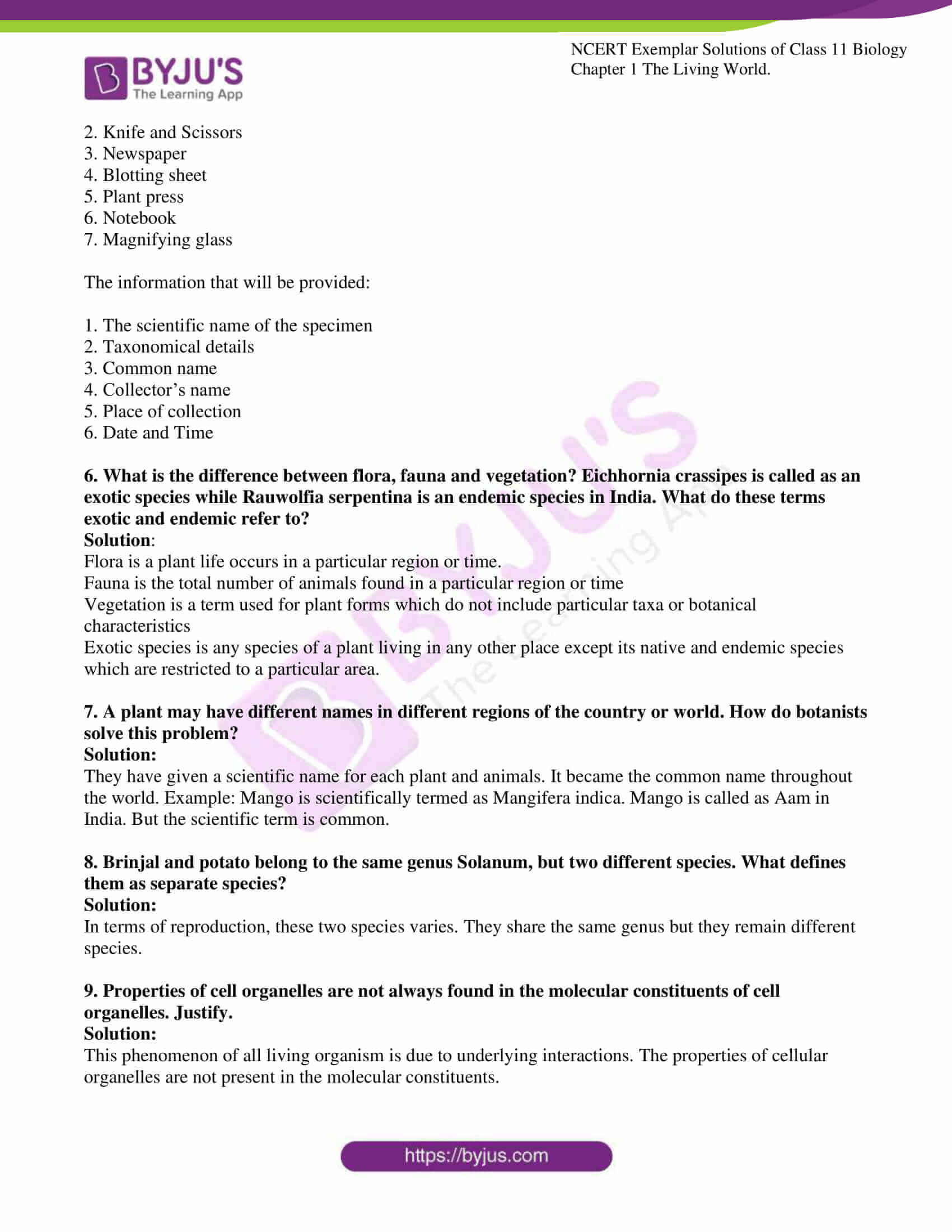
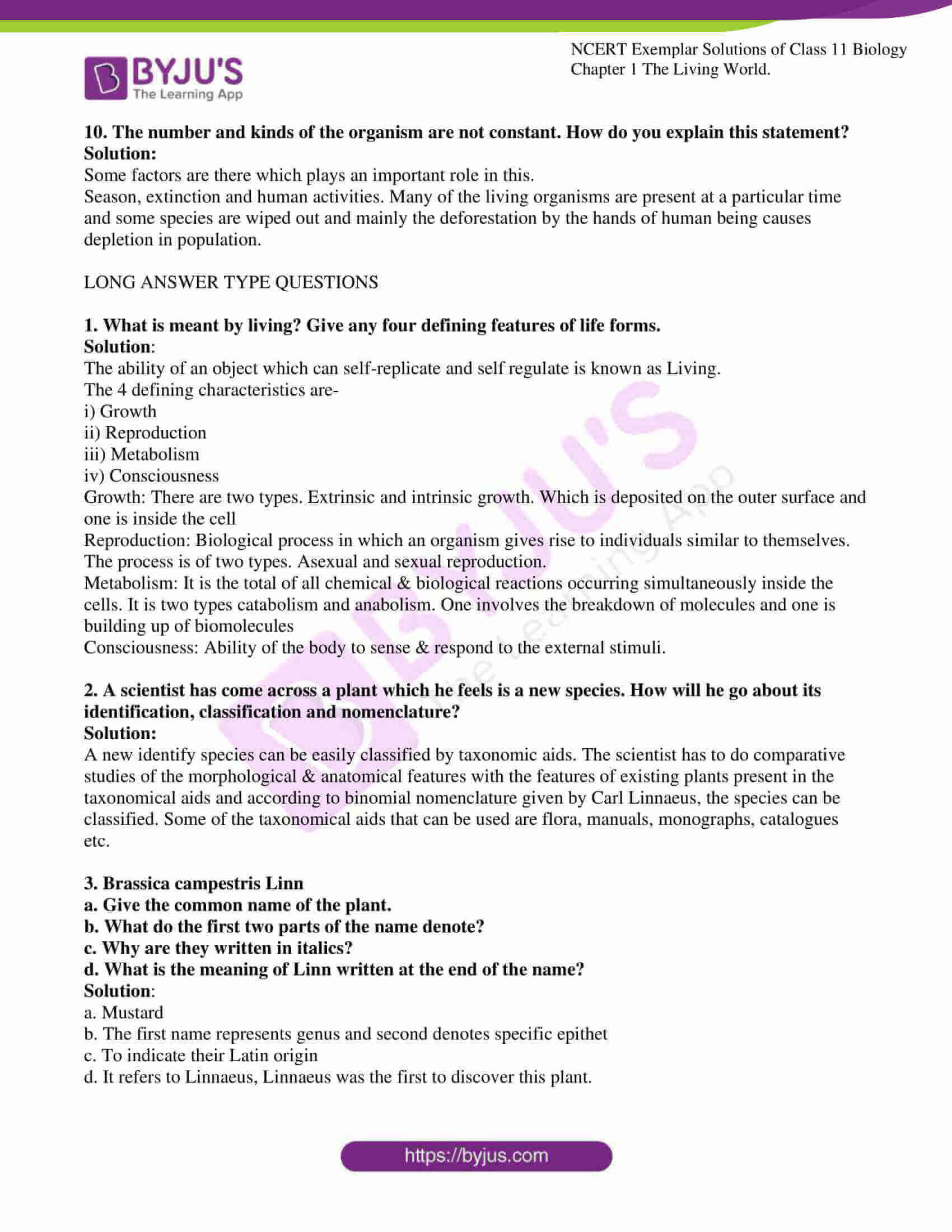
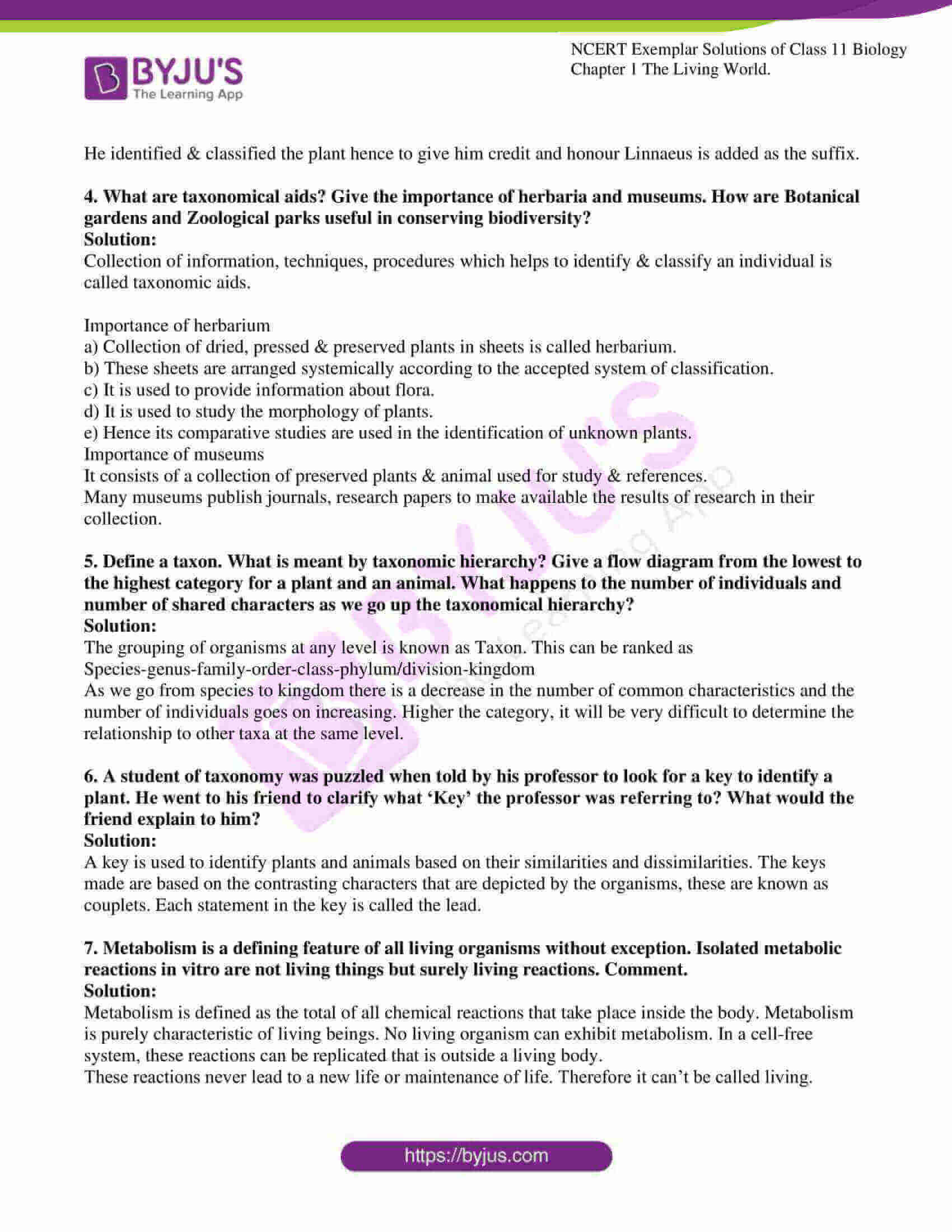
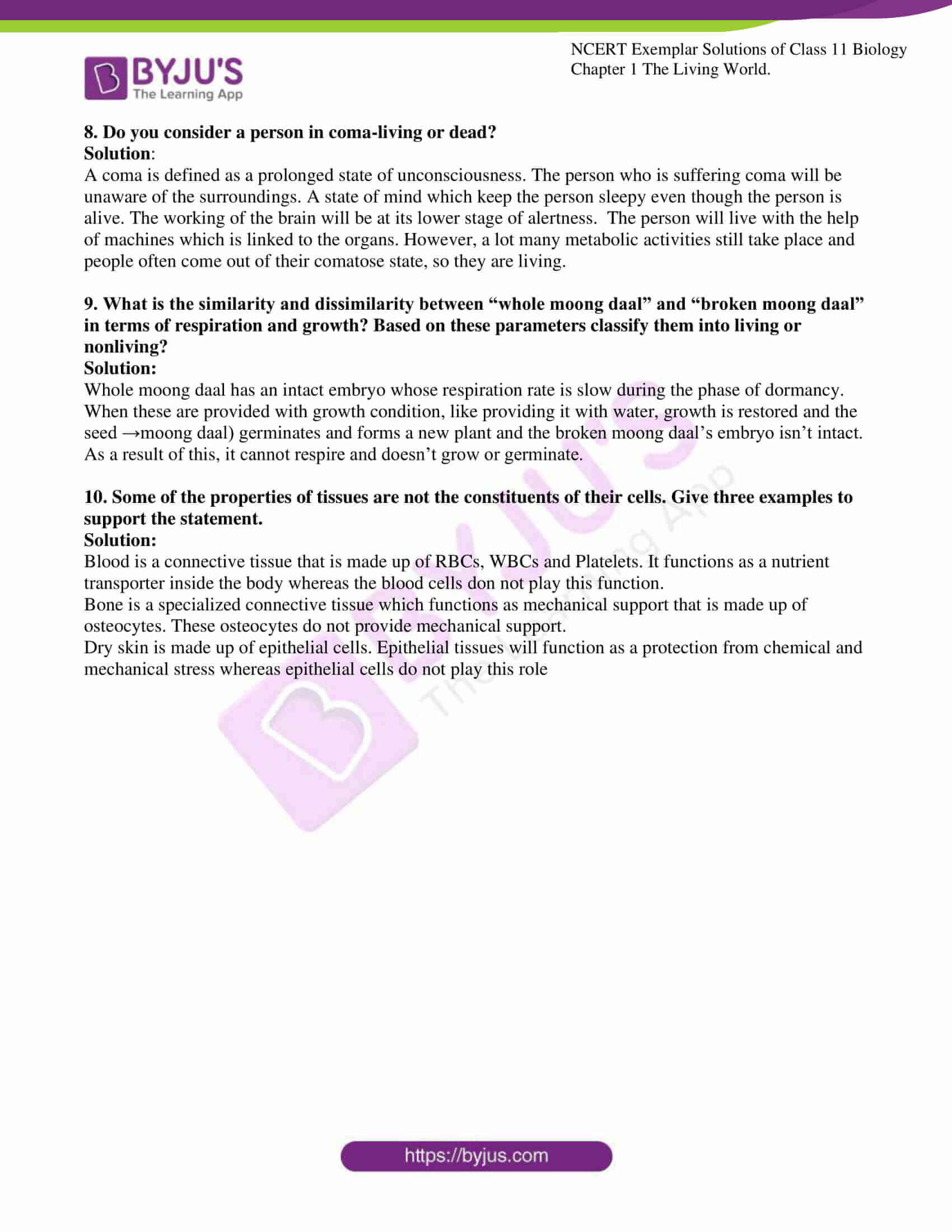

Comments